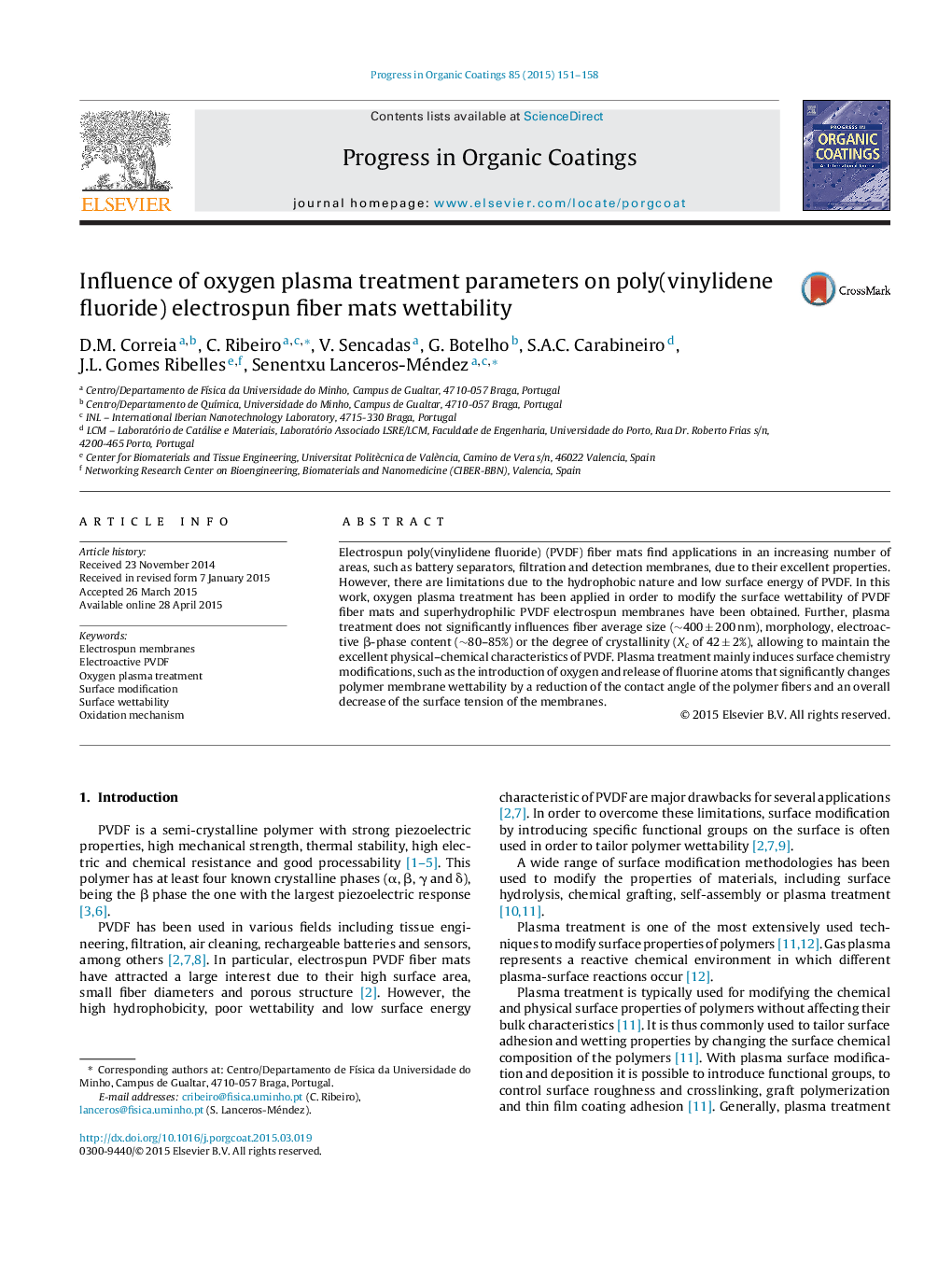| Article ID | Journal | Published Year | Pages | File Type |
|---|---|---|---|---|
| 692357 | Progress in Organic Coatings | 2015 | 8 Pages |
•Electrospun PVDF fiber mats find applications in an increasing number of areas.•There are limitations due to the hydrophobic nature and low surface energy of PVDF.•Superhydrophobic PVDF membranes have been obtained after oxygen plasma treatment.•This is attributed to the introduction of oxygen and a decrease of fluorine content.•The physical properties of PVDF as active material are not influenced by the surface treatment.
Electrospun poly(vinylidene fluoride) (PVDF) fiber mats find applications in an increasing number of areas, such as battery separators, filtration and detection membranes, due to their excellent properties. However, there are limitations due to the hydrophobic nature and low surface energy of PVDF. In this work, oxygen plasma treatment has been applied in order to modify the surface wettability of PVDF fiber mats and superhydrophilic PVDF electrospun membranes have been obtained. Further, plasma treatment does not significantly influences fiber average size (∼400 ± 200 nm), morphology, electroactive β-phase content (∼80–85%) or the degree of crystallinity (Xc of 42 ± 2%), allowing to maintain the excellent physical–chemical characteristics of PVDF. Plasma treatment mainly induces surface chemistry modifications, such as the introduction of oxygen and release of fluorine atoms that significantly changes polymer membrane wettability by a reduction of the contact angle of the polymer fibers and an overall decrease of the surface tension of the membranes.
Graphical abstractFigure optionsDownload full-size imageDownload as PowerPoint slide
